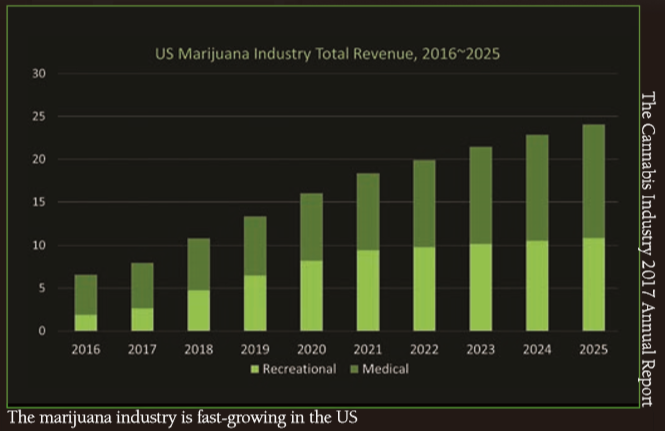The renowned British medical journal The Lancet, in its May issue, announced a breakthrough in the development of Methylenedioxymethamphetamine (MDMA), which is an illicit drug also known as ecstasy, as the very first cure for Post-Traumatic Stress Disorder (PTSD), drawing attention from patients and their families. While many chemicals that are classified as being illicit drugs have started to show great potential as medicines, public perception on and legal regulations on drugs are resistant to change. In this article, the Sungkyun Times (SKT) explores the progress in the research of illicit drugs as medicine, their current limitations, and controversies around this subject.
Pharmaceutical Research Frozen in Time
History of Illicit Drugs as Medicine
Illicit drugs, as defined by the United Nations Office on Drug Control, are drugs used for recreational purposes with enough harmful effects to the mind and body to warrant regulation. The United Nations regulates a set of scheduled drugs in international law, with 28 Schedule I drugs being regulated most strictly for having no medical applicability and 88 Schedule II, III, and IV drugs being less regulated for their usefulness to humanity in some way. However, social acceptance for many Schedule I drugs has become more tolerant since the laws were implemented, and the scientific understanding of Schedule I drugs has also improved. What makes a drug illegal, in some cases, is not quite based on the rational consensus reached by biochemists and medical professionals, but rather obsolete research and old public perceptions. According to a study by the University of Bristol cited in The Lancet, illegal drugs such as marijuana and LSD have far lower toxicity and addictiveness than the commonly used and legal chemical substances such as nicotine and alcohol. Humanity has used many drugs that are illegal today for medicinal purposes for millennia before they were regulated. Marijuana usage dates back to ancient times, with samples found on Ancient Egyptian sarcophagi. Cocaine and morphine were also used as anesthetic agents until just a few decades ago, but they have been replaced by their slightly less harmful, modified descendants. There are other examples including psilocybin (so-called “magic mushrooms”) and other natural hallucinogens that were used in religious rituals by numerous cultures. While some drugs were banned for legitimate reasons, it is worth questioning whether humanity has also been discarding traditional medical wisdom. Research on Schedule I drugs has been limited until very recently. The introduction of international regulations led to a decline in MDMA, Lysergic Acid Diethylamide (LSD), and marijuana research in the early 1970s. It is only in this decade that related research has been resumed after several nations moved towards legalization of some scheduled drugs and liberalization of research regulations. Perceptions have been changing towards marijuana in North America, South America, and Europe, and politicians, legal organizations, and people have come to see marijuana as being benign enough to be decriminalized for medical or recreational usage. This trend has been slow-moving and limited, and the scale of research remains small.
Limitations of Available Medicines
The reason the pharmaceutical industry needs to look for alternatives is because many drugs used today are limited in effect and have excessive side effects in fields such as nervous disorders, mood disorders, chronic pain, and palliative medicine for cancer patients. Neuropsychology is a field in which progress has been slow-moving. Antidepressants, especially, have not improved much since they were discovered 70 years ago. Drugs that counter epilepsy, Parkinson’s, and other neural conditions are also quite limited in their effectiveness, and doctors currently have no ways to definitively treat any of these disorders, which is disturbing considering their high prevalence. According to the World Health Organization, over 300 million people suffer from depression today.
Advances in oncology have turned cancer into a more manageable medical condition, but methods used to treat cancer such as chemotherapy and radiotherapy can still cause damaging side effects, and there has been limited progress in developing drugs to suppress such side effects. Medicine available today to ease the nausea, vomiting, and chronic pain that patients suffer from during chemotherapy are insufficient, or even inflict other side effects of their own. Chronic pain is another field full of problems. Opioid painkillers have become a major component of chronic pain therapy across the world with disastrous results. In North America, the catastrophic opioid crisis has killed 614,000 people since 1999, according to the Center for Disease Control (CDC); this can be seen as a direct result of widespread abuse of painkiller medicine. It is evident that breakthroughs are needed to replace the current toolset with better medicine.

Achievements and Potential of Illicit Drugs
The Weed Wave
Derived from the leaves of the Cannabis plant, marijuana can be smoked, eaten, injected, or dabbed onto the skin in various forms. In many countries, it has long been legalized for medical and even recreational usage, and marijuana indulgence has become a subculture of its own. Although it is now sold from licensed dispensaries under the authorization of local governments in some places such as Colorado, it is still illegal in most countries for multinational pharmaceutical companies to be involved in marijuana cultivation or production; hence, it is not sold in ordinary drugstores. While no illicit drugs other than marijuana have been legalized anywhere so far, the impact of marijuana suggests that there is medical and economic potential in the medical legalization of illicit drugs. Currently, marijuana has formed a $14 billion market in just nine US states according to GreenWave Advisors, an American financial advisory firm, and is transforming medical practice in many situations.
Cancer is a prime usage scenario, with marijuana showing higher effectiveness compared to old medicine in suppressing Chemotherapy Induced Nausea and Vomiting (CINV). Cannabinoid oil extract is another form of marijuana that has proven to be useful. Richard Holt, a reporter for The Telegraph of the United Kingdom (UK), reported that using cannabinoid oil for his chronic pain condition, which he acquired after falling out of a window from a height of seven meters, transformed his daily routines. Holt became energetic enough to do Jiu-jitsu, whereas previous opioid painkillers had left him watching television and lethargic all day long. Cannabinoid oil is also effective in controlling seizures according to multiple studies. A viral video showing a boy having a seizure, for example, who was calmed right after taking orally administered cannabinoid oil, caused a stir in Korea recently.

“Miracle Cure” Breakthroughs and Future Research Direction
While marijuana is primarily useful for providing comfort to patients, MDMA is an illicit drug that is likely to provide the first effective cure for PTSD. In a third phase clinical trial conducted by the California State University, MDMA showed efficacy in curing PTSD in 86% of subjects, and it is expected to be commercialized as soon as 2021 in the US. The trials featured a realistic set of patients; 26 soldiers and emergency responders suffering from suicidal ideation and traumatic experiences. Previously, there had been no way to systematically treat PTSD, and MDMA is now expected to provide comfort to millions of patients around the world who are currently unable to have a normal life due to the impact of their traumatic experiences. The Multidisciplinary Association for Psychedelic Studies (MAPS) plans to conduct another set of third-phase trials in 14 cities in Israel, the US, and Canada. Ketamine is another illicit drug showing “miracle cure” level potential. Third-phase trials conducted by Yale University and pharmaceutics firm Johnson & Johnson have yielded encouraging results. It is expected to be the first new antidepressant in over 35 years and the biggest discovery in the history of antidepressant research. Antidepressants that are currently in use take five weeks to show results and do not show sufficient efficacy for up to 80% of patients, according to the US National Library of Medicine. In comparison, ketamine takes only a few hours to show immediate effect for most patients. As conclusive evidence has been drawn, it is expected to be permitted for medical use along with MDMA. Exploration of psychedelic treatment is a more experimental field for illicit drug research. LSD and psilocybin are powerful hallucinogens with low addictiveness and toxicity, and their application in depression, PTSD, and alcoholism is currently being probed in exploratory trials. It is yet to be determined as effective medicine, but the results of the first trials will verify whether these substances have potential.
Controversies and Necessary Discussions
Side Effects and Potential of Abuse
While regulations for some drugs are arguably unreasonable, there is a reason why they were regulated in the first place; most of the drugs discussed in this article do have side effects. Rapid legalization of marijuana is a controversial one because the increase of usage has outpaced the research of how it exactly works; there are more than 100 substances in marijuana and most of them have unknown effects on the human body. Known side effects are quite mild compared to other drugs; pregnant women are encouraged to avoid marijuana due to potential fetal toxicity. Research into effects on lung functions and carcinogenic potential has revealed marijuana to be harmless in that regard. In a survey of oncologists published on May 10th in the Journal of Clinical Oncology, over 50% of the respondents replied that they would recommend marijuana products to their patients under certain circumstances, but only 30% of the respondents replied that they have a detailed understanding of the effects of marijuana on the body. Potential for abuse is something that cannot be disregarded now due to insufficient research and knowledge. MDMA is a drug with severe side effects, including suicidal ideation, headaches, anxiety, lethargy, and sleep disorder. Thus, it will only be useful in treating serious mental afflictions that outweigh these effects such as depression and PTSD. After legalization, it will be necessary to strictly evaluate whether a patient would benefit from treatment or not even with the dangerous side effects. LSD and psilocybin has very low toxicity and addictiveness, but it is one of the strongest hallucinogens that are known about and severely disorients subjects for the duration of its effects, requiring supervision during usage. It is inevitable that if legalized, there might be great potential for abuse through the hands of medical professionals and patients, given the history of other legal drugs such as propofol. It is still necessary, however, to focus on the fact that research on illicit drugs has the potential to result in revolutionary medicine that could treat widespread and severe conditions such as depression, PTSD, epilepsy, seizures, Parkinson’s, and adverse reaction to chemotherapy.
Beyond Legal and Perceptual Limitations
In many countries, there is a conservative attitude among politicians and the medical establishment that is resistant to introducing illicit drugs as medicine, so discussions on this subject have been naturally sparse in most nations. Rational discussion based on scientific facts and statistics will be necessary, and promotion of the fact that current laws are based on out-ofdate frameworks is needed. Discussions on legalization of illicit drugs in Korea has been muted, but there has been notable activity starting this year. In January, 2018, a group of 13 lawmakers proposed the legalization of marijuana, and it is pending discussion in the National Assembly, although it is unlikely to pass. A fifteen-minute episode of Silhwa Tamsadae, an informative program on MBC, covered the usage of medical marijuana on May 10th and encouraged discourse. More discussions are expected to come in Korea and beyond, but the parties involved must take care to make sure that the focus is on patients and their quality of life.

Research results have been clear. There are illegal drugs that present a clear advantage over pre-existing drugs on multiple medical domains, but are being held back by irrational regulations. It is time to accelerate drug law liberalization and legal discussions. The SKT urges the Kingos to participate in rational and scientific discussion of the medical use of illicit drugs.
